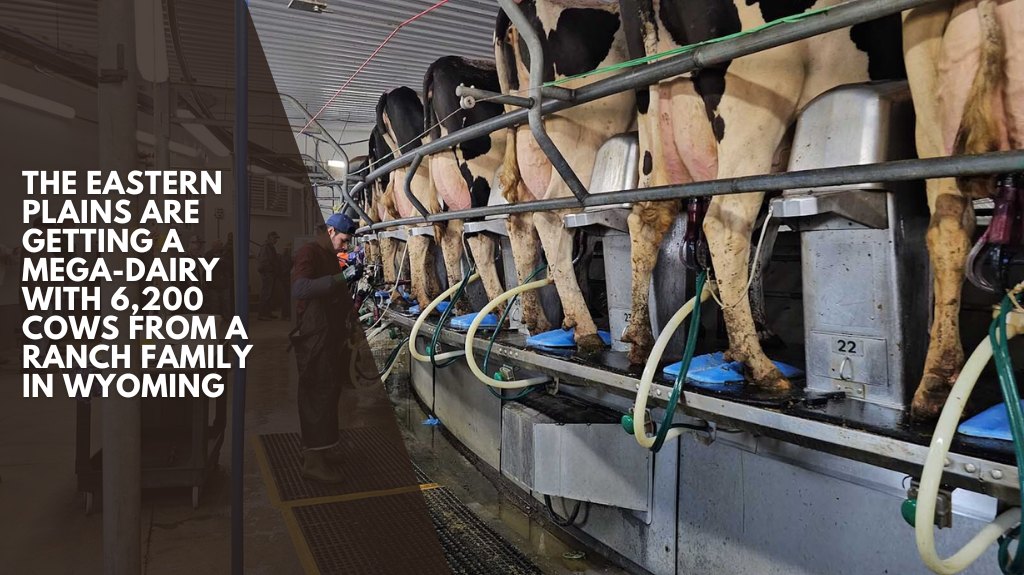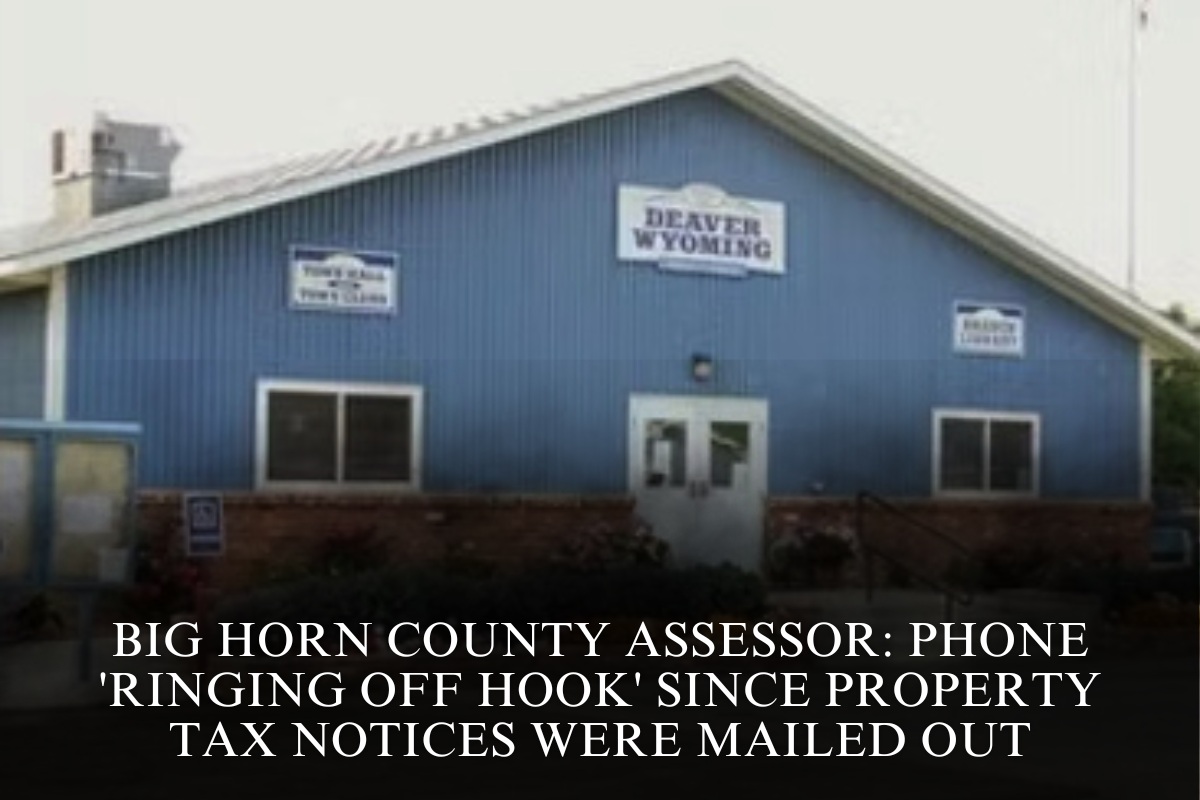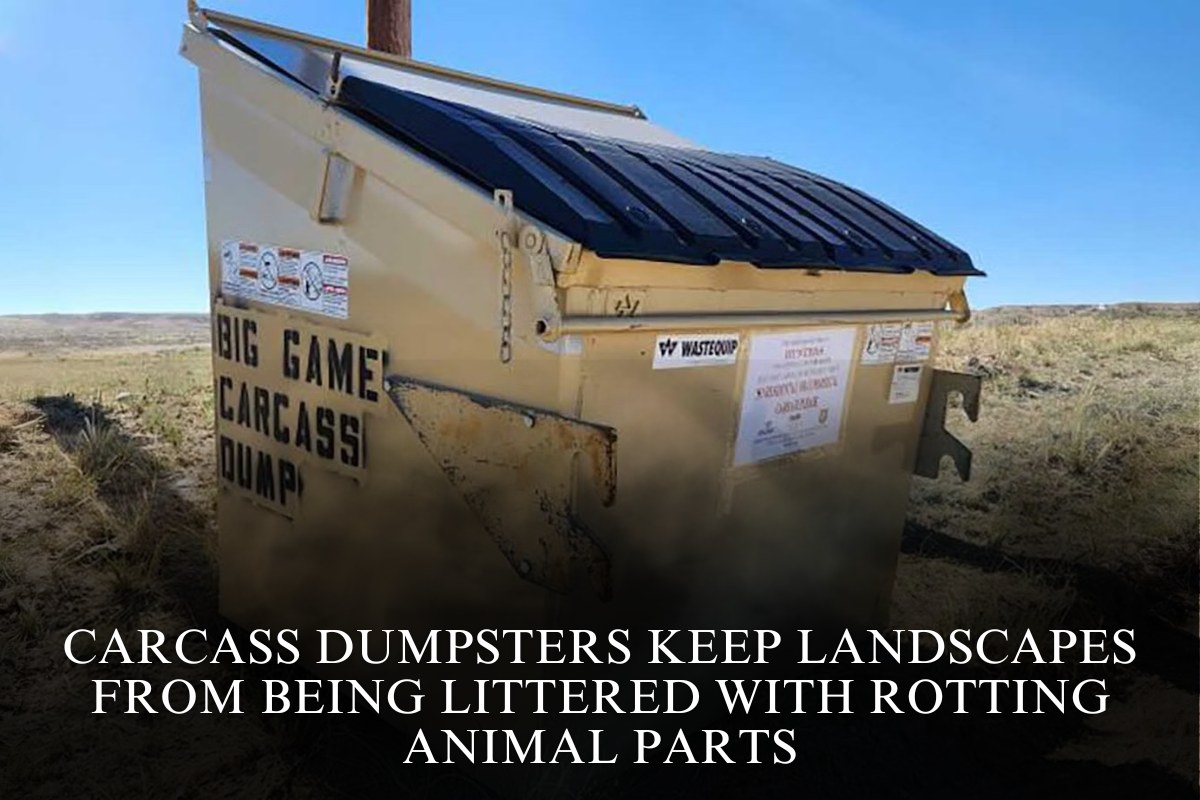CARPENTER — Jerry Burnett, a farmer and rancher raising wheat and running a typical cow-calf operation near the tiny town of Carpenter with his two sons, Jeff and Jay, had what appeared to be a madcap idea in the early 2000s when mad cow disease struck.
Burnett loves to tell this story whenever he gets the chance. His most recent opportunity came during a tour of Burnett Enterprises with Cheyenne’s Centennial Antique Tractor & Engine Club.
“They (Jeff and Jay) came in here and said they wanted to build a mega dairy,” Burnett informed the group. “And those mega dairies have, like, 3,000 cows.”
Burnett couldn’t believe what he had heard them say.
“You can’t do anything with 3,000 cows in one day,” he told the boys, shaking his head. “Let alone milk them.”
Burnett did, however, give his sons’ idea a chance, agreeing to accompany them on a tour of some large dairies.
One small thing led to another, each larger than the last. Currently, the dairy milks approximately two-thirds of Wyoming’s 9,000 dairy cattle.
That equates to 6,200 cows per day—800 per hour—and 66,400 gallons of milk per day.
The milk is trucked to Leprino Foods in Colorado, where it is made into mozzarella cheese for Pizza Hut. That means that if you eat a slice of pizza, some of the milk used to make the cheese likely came from Burnett Enterprises in Wyoming.
Surprising Success
Burnett initially thought the idea of milking cows was the craziest he’d heard in a while.
After all, dairies across America are more likely to struggle for survival or even go out of business than to start a new one.
Consider Star Valley in Western Wyoming as an example. That area used to be so densely populated with dairies all along the valley that Afton resident Jody Shumway grew up knowing he was going to be a dairy farmer.
“If you were going to be anything in life, you had to milk a cow,” Shumway told Cowboy State Daily in a 2017 interview. “That’s just how you were raised.” Everyone was a dairy farmer, and it was simply a cool thing to do.”
However, the dairy sector began to decline precipitously in the 1970s. There were 648,000 dairies back then, but by 2022, only 24,470 remained, the majority with herds of more than 2,500 cows.
Shumway Farms is now the last dairy left in Star Valley.
The only way it survived was through sheer determination and unconventional thinking. Shumway transitioned to a direct-to-consumer model thanks to Wyoming’s Food Freedom Act, which saved a family dairy with roots in the 1880s.
Shumway Farms is still struggling to survive, despite the fact that his Wyoming skyr, a yogurt-like product, and homemade ice creams are gaining popularity across the region.
Business Sense
Out-of-the-box thinking was one of the reasons Burnett told both of his sons that if they wanted any help getting a start in life from him, then they were both going to college.
“I don’t know that going to college really makes you that much smarter,” Burnett told me. “But your brain gets to work a little bit differently.”
The time away would allow his sons to think differently about the ranch, rather than simply perpetuating habits that Burnett felt had become an economic vise.
“I didn’t know what I wanted,” Burnett explained. “I just knew I felt stuck in a rut. I knew we needed to make some sort of change.
And when I looked around the community, it appeared that the people with more education were doing a better job. So I just thought it was critical for the kids to receive an education.”
One of the things Jeff and Jay learned in college was how to analyze operations to determine whether the economics are correct.
“When my dad, Jeff, and my uncle, Jay, returned from college, they realized the farm couldn’t support two more families,” grandson Reese Burnett told Cowboy State Daily. “And so if they both wanted to come home and farm, they knew they had to get bigger.”
Beets Before Bovines
First, the boys decided to give sugar beet farming a try.
“By the second year we were the largest sugar beet grower for Holly Sugar in Torrington,” Burnett fondly remembered. “So that went really well and that gave us a big kick with the sugar beets, so we had a little bit of money.”
Burnett’s sons decided to build a feedlot to custom-feed cattle as their next business venture.
“That was just a good way to get their foot rolling and farming,” Reese recounted. “Because it didn’t take a lot of capital infrastructure, and so it didn’t take a lot of upfront expense.”
That also resulted in some instant sweat equity and was going well until 2003, when mad cow disease hit the US market, causing beef sales to plummet.
“After that, nobody wanted to feed cattle anymore,” Reese told me. “They lost all their custom-feeding customers.”
They needed a new direction, and fast. That prompted them to take a closer look at a dairy just down the road from their feedlot.
“They’re on the Colorado side, but they’re only about 15 miles south of us,” Reese told me. “And they were a feed lot and a dairy on the same location, so dad went and talked to them.”
That conversation occurred on Thursday.
By the following Monday — barely a weekend later — a deal had been reached, and the Burnetts were in the dairy business, milking 400 to 600 cattle.
Growing The Operation
The Burnett family has a saying they repeat often, and that saying is, “Average goes broke.”
The Burnetts’ sons understood that in order to establish a stable economic base, they needed to expand their herd. The first increase was to 3,000 cows, but that figure was not ideal.
“When we were milking 3,000 cows, we were doing that with 50 employees,” Reese told me. “And we have an accountant who does accounting for dairies all across the United States.”
Using that information, he could show the Burnetts how much they were spending per pound of milk compared to their peers.
That helped them realize that the optimal number of cows to milk was closer to 6,000.
“So we went from 3,000 cows to 6,000 cows and about 54 employees,” Reese told me.
Reese added that such a size is becoming increasingly common.
“I don’t want to downplay the numbers at all,” he told me. “Six thousand cows is a lot, but if you look at the trends in dairies in the United States, herd size, or the number of cattle, is rapidly increasing because everyone else is figuring out exactly what we did.
If you can milk twice as many cows with the same number of employees, you will earn more money for every 100 pounds of milk sold.
Innovative Approach
Now that the dairy farm is the size that it needs to be, the Burnetts are continuing to work on maximizing the operation with innovative approaches, some of which have patents pending.
One of their projects is a vertical farming operation where they grow corn or wheat. That’s housed beneath a massive quonset that resembles a huge, puffy pillow under the sky.
It’s still a work in progress, but as part of that growing operation, the brothers have discovered how to naturally accelerate the germination of seeds that will be grown indoors, allowing them to grow their own milk cow quality feed at a lower cost.
That is difficult to do on dryland acres, but it is also difficult to achieve all year in Wyoming. Winter feels like it’s always approaching, and the summer growing season is always brief and fleeting.
By switching to sprouted grains grown indoors, they could have a year-round source of high-quality feed, which would help them save money while also conserving a lot of water.
“It doesn’t take very much water to sprout a seed,” Reese told the crowd. “All the water that runs off, when we’re making milk cow feed, water is one of our ingredients, so we pump it down there and use it in their rations.”
The process involves taking an old idea — sprouted grains — and using new technology to make it work on a larger scale.
“When you think about any grain, whether it’s wheat or corn or milo or anything, a seed is storing energy in the form of starch,” Reese told me. “When that plant sprouts, it starts to turn that starch into sugars which are less durable but are more readily available for digestion.”
Self-Sustaining System
One of the other innovative things the Burnetts have done on the dairy farm is figure out a system where they can reuse the bedding while recycling the manure and creating two marketable products from it.
The synergy begins with sand bedding, which is washed into a drain system and transported to a facility where it is cleaned and disinfected before being reused.
Meanwhile, the manure passes through a digester, where microbes similar to those found in a cow’s stomach break it down.
“That creates methane, and methane and natural gas are the same molecule,” Reese told me. “And so we can refine that and sell that methane as natural gas, which you can burn in your home just like any other natural gas.”
The remaining manure can be applied to the dairy farm’s pastures or sold as fertilizer if desired.
“Really there’s three revenue streams that come off that,” Reese told me. “The manure is fertilizer, the gas is energy, and then there are carbon credits.”
The ranch is eligible for carbon credits due to all of the work it has done to reduce methane emissions throughout the operation.
One of the dairy’s new areas of focus is dairy beef, which is produced by crossing Holsteins with Angus cattle.
Holsteins are typically larger than Angus cattle, so the cross produces beef cattle that gain weight and are worth more at the market. Burnett Enterprises will release its first wave of dairy beef this fall.
Time will tell if that is the right economic strategy for this pioneering Wyoming dairy, which is looking for new ways for American dairies to grow and thrive in the future.












